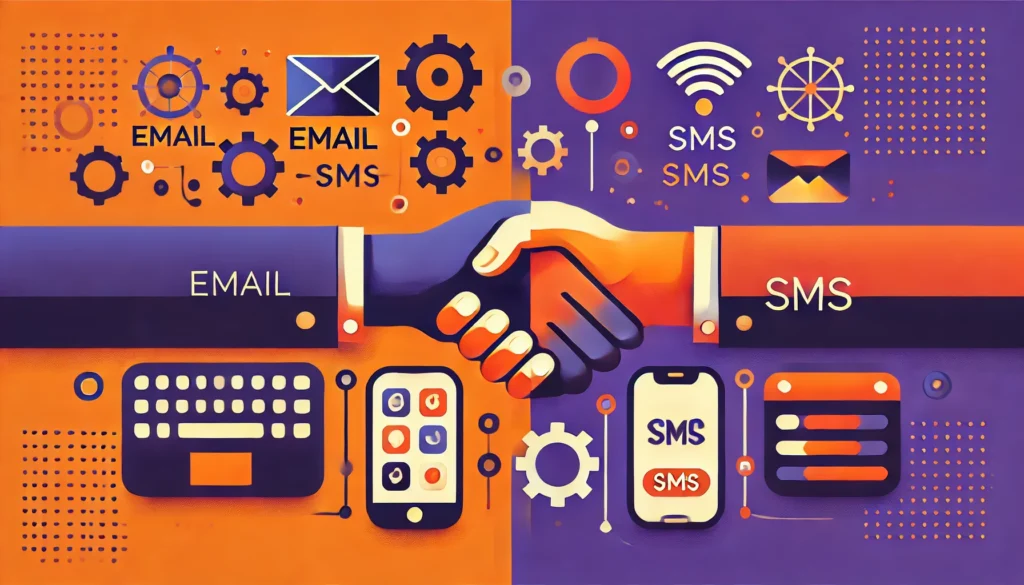B2B vs. B2C Marketing Automation: Key Differences and Best Practices
Product
Marketing automation has revolutionized how businesses approach their audience, but the strategies differ markedly between B2B (Business-to-Business) and B2C (Business-to-Consumer) sectors. Each requires unique tactics and tools to effectively engage and convert their specific audiences. This article explores the fundamental differences in marketing automation practices between B2B and B2C, highlighting key strategies that cater to the distinct needs of each market to enhance campaign effectiveness and drive business growth.
Understanding B2B and B2C Marketing Automation
B2B (Business-to-Business) marketing automation focuses on long sales cycles and relationships with a relatively small, targeted group of professional clients. It emphasizes personalized, value-driven communications and often integrates with CRM systems to nurture leads through complex decision-making processes. On the other hand, B2C (Business-to-Consumer) marketing automation targets larger audiences with faster purchase decisions, prioritizing speed and volume. B2C campaigns use automation to push promotions, seasonal offers, and direct sales through more generalized messaging aimed at triggering immediate responses. The key differences lie in their approaches to communication, sales cycles, and the nature of their respective audiences.
Key Strategies and Best Practices for B2B Marketing Automation
In B2B marketing automation, the focus is on building and nurturing long-term relationships with business clients through tailored, relevant content. Here are some pivotal strategies and best practices:
Lead Scoring and Segmentation: Implement sophisticated lead scoring models to prioritize leads based on their interaction and engagement levels. Segmentation helps deliver targeted content that addresses the specific needs and interests of each segment.
Content Personalization: Use insights from customer data to personalize all communications. This could include customizing emails based on the user’s past interactions or industry-specific needs.
Multi-channel Marketing: Employ a multi-channel approach that integrates email, social media, and content marketing to maintain engagement and consistency across all platforms.
Nurturing Campaigns: Develop long-term nurturing campaigns that provide value over time, educating leads through a mix of informational content and soft sales pitches until they are ready to buy.
Alignment of Sales and Marketing: Ensure that marketing and sales teams are closely aligned. This helps in creating a seamless transition for leads moving through the sales funnel, from initial contact to closing a deal.
Analytics and Feedback: Continuously analyze the performance of marketing campaigns and use feedback to refine strategies. This includes monitoring metrics like click-through rates, conversion rates, and overall ROI.
Key Strategies and Best Practices for B2C Marketing Automation
B2C marketing automation is geared towards driving quick purchasing decisions and enhancing customer experiences on a large scale. Here are several effective strategies and best practices:
Behavioral Triggers: Implement automation tools that react to customer behaviors, such as abandoning a shopping cart, visiting a webpage, or past purchasing history, to send timely and relevant messages.
Email Campaign Optimization: Use automation to segment audiences and tailor email campaigns that resonate with different consumer profiles, maximizing open and click-through rates.
Social Media Integration: Automate social media postings and ads to increase engagement and drive traffic to your e-commerce platforms, making sure to personalize messages to fit different user groups.
Customer Loyalty Programs: Automate loyalty programs to reward frequent shoppers and encourage repeat business. Personalized discounts and offers can be automated based on the customer’s shopping behavior.
A/B Testing: Regularly use A/B testing on automated campaigns to refine and optimize messaging, layout, and timing to discover what yields the best conversion rates.
Real-Time Personalization: Leverage real-time data to personalize website experiences, adjusting content, recommendations, and offers based on the visitor’s current behavior.
By focusing on these strategies, B2C companies can effectively use marketing automation to boost consumer engagement, increase sales, and build lasting relationships with their customer base.
Key Benefits of B2B and B2C Marketing
Different marketing approaches offer unique advantages depending on the target audience. B2B marketing focuses on relational dynamics and larger transactions, while B2C marketing excels in rapid sales cycles and extensive market reach. Understanding these benefits can help businesses tailor their strategies effectively.
B2B Marketing Benefits:
Customized Relationship Management: Focuses on long-term client retention and loyalty through tailored strategies.
Higher Value Deals: Typically involves larger transaction values due to business-oriented purchases.
Detailed Customer Insights: Offers in-depth understanding of customer needs through direct interactions and analytics.
B2C Marketing Benefits:
Broader Audience Reach: Targets a vast consumer base, enhancing brand exposure.
Faster Purchase Decisions: Capitalizes on consumers’ quicker buying behaviors, shortening the sales cycle.
High Volume Sales: Achieves mass-market sales volume driven by emotional purchasing.
Timing Social Media Posts for Maximum Impact
The timing of social media posts can significantly influence their effectiveness, depending on whether your target audience is businesses (B2B) or consumers (B2C). Understanding when these groups are most active online can help optimize engagement and reach. Let’s analyze the optimal days and hours to post content for each sector to ensure your social media strategy captures the right audience at the right time.
For B2B companies, the best days to post content on social media are typically weekdays, especially Tuesdays through Thursdays. The optimal times are during business hours, roughly from 10 AM to 4 PM, when professionals are more likely to be active and engaged during work breaks or in-between tasks.
In contrast, B2C companies often find that evenings and weekends are the most effective times to reach consumers. The ideal times can range from mid-afternoon to late evening, around 1 PM to 8 PM, especially on Wednesdays through Sundays, when consumers are more likely to browse social media during their leisure time.
The key takeaway is to tailor social media activity to the typical daily routines of the target audience, maximizing visibility and engagement for each sector.



